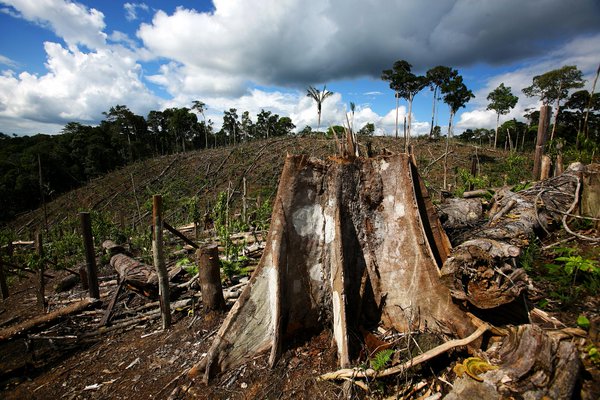
Kampala, Uganda | JOSEPH BAHINGWIRE | Ugandans have been urged to engage more in commercial tree planning if the country is to curb the problem of declining forest coverage and its effects.
Denis Kavuma the general manager Uganda Timber Growers Association says despite the increasing demand for wood ant its products in the country, it has been observed that forest coverage is declining at a high rate due to limited efforts to preserve natural forests and engage in commercial forestry by different stake holders.
He says on average, it cost around Shs1.5m per hectare (US$730) to establish a plantation and this cost covers all expected costs up to canopy closure (that is, when the tree canopies in adjacent rows touch and shade out the ground vegetation), which is around three years with Pinus caribaea, 1-2 years with E. grandis.
Kavuma attributes degradation of forests and wetlands to the increasing population, high demand for charcoal and quest for land for agriculture, among others.
“Uganda is approaching a major shortage of sawn timber. To meet the increasing demand there has been an increased pressure on its remaining tropical forests the reason we are calling upon the public to invest in timber plantations, through both the public sector, National Forest Authority (NFA), and the private sector,” he adds.
He says their association is committed to produce more wood to meet the domestic demand and enough for export. UTGA currently has more than 530 members who are involved in commercial forestry.
The total contribution of forestry to the national economy stands at 57 billion shillings from timber, 320 billion from energy and has created over 100,000 jobs and contributes 6 per cent to the country’s gross Domestic Product (GDP).
He explained that Uganda’s Vision 2040 targets restoration of Uganda’s forest cover from 9 % to 24% by 2040 while the second National Development Plan (NDPII) targets to increase forest cover from 9 % to 18% of the Uganda’s land surface by 2021.
From the 1990’s, Uganda’s forest coverage has been on the decline. According to the Ministry Of Water and environment Report on Status of Uganda’s Forests 2016 more than 96 per cent of the population rely on bio mass. Unfortunately efforts to preserve the existing natural forest and establish more commercial forests have been moving at a slow pace.
Between 1990 and 2015, Uganda lost an average of 86,500 hectares of forest per year. This amounts to an average annual deforestation rate of 1.76%. In total, between 1990 and 2015, Uganda lost 26.3% of its forest cover, or around 1,297,000 hectares.
To solve the problem of loss of forest coverage, in 2004 the Food and Agriculture organisation of the United Nations with funding from the European Union in 2004 launched the Sawlog production Grant Scheme to support rural incomes through commercial tree planting by the private sector in Uganda.
Leonida Hitimana the FAO/SPGS project coordinator says the programme is aimed at bridging the supply gap of wood products by increasing the production of high quality timber plantations by the private sector.
“Forests and wetlands are home to immense biodiversity, including rare bird species, insects, medicinal plants and core water catchments for different water bodies. It is for this reason that the private sector should be more involved in commercial tree planting so as reduce pressure on the natural forests,” he says.
Hitimana adds that FAO is committed to fostering a vibrant forestry sector by enabling access to high quality tree seedlings; provide technical advice to growers so that the ever growing demand for wood can be countered by enough supply.
 The Independent Uganda: You get the Truth we Pay the Price
The Independent Uganda: You get the Truth we Pay the Price



